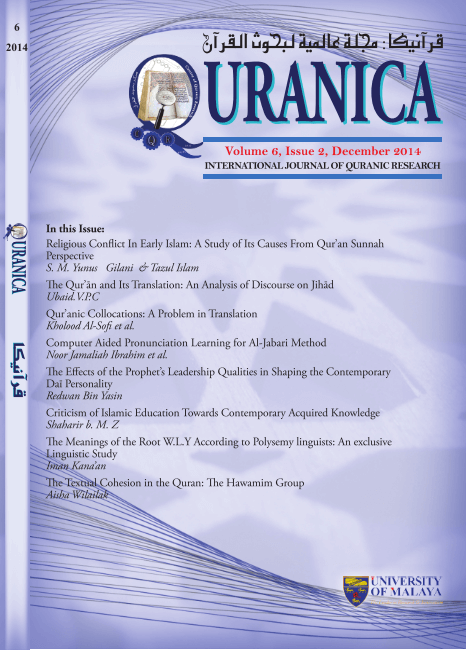The Meanings of the Root W.L.Y According to Polysemy linguists: An exclusive Linguistic Study
Main Article Content
Abstract
This study aims to clarify the meanings of w.l.y utilized in the Qur'an as the noun forms, focusing on the Polysemy linguist’s authorships. To achieve this goal, the article follows an inductive statistical approach, which counts the places of the nouns of this root in the Qur'ān. Then it chooses seven of the scientists to identify the meanings of "w.l.y" from their points of view. These linguist scholars are: Muqatel, Harun, Tirmidhi, Al- askari, Al- nishaburi, Al- damganai, and Ibn aljawzi. The results of the induction approach indicate that the root W.L.Y has been used in the Qur'ān for 123 times in noun derivation forms, and 40 places on eight forms such as; "Maf‘al", "fe‘al", "fa‘ail" and "muffa‘ail", and adjective form"fa‘aīl ", and "af‘ala" (superlative form), and the irregular plural "af‘aila", "mafa‘ail", and infinitive form "fi‘aalah". The study findings further show that these scholars have defined 14 meanings for the root w.l.y including 9 general meanings, and 5 uncommon meanings mentioned by only three or less of the scholars. And it is important to be noted that the mutual beneficial relationships are found between both common and uncommon meanings, such as a relationship between parents and their children, and between Idols and their worshipers, and between companions. Thus, this article is an initial research for future studies to be conducted on the other aspects of root w.l.y, such as contextual and semantics studies on this root.
Downloads
Article Details
Disclaimer
QURANICA makes every effort to ensure the accuracy of all its contents. However, opinions, discussions, views and recommendations are expressed in this journal do not necessarily reflect the official policy of QURANICA or views of its editors or publishers. Therefore, QURANICA and its publishers will not be liable for any controversy may be arisen. The journal reserves the right, at its sole discretion, to change its terms and conditions of publications.
Copyright
It is a condition of publication that manuscript submitted to the journal have not been published, accepted for publication, nor simultaneously submitted for publication elsewhere. By submitting a manuscript, the author(s) agrees that copyright for the article is transferred to the publisher, if and when the manuscript is accepted for publication.
